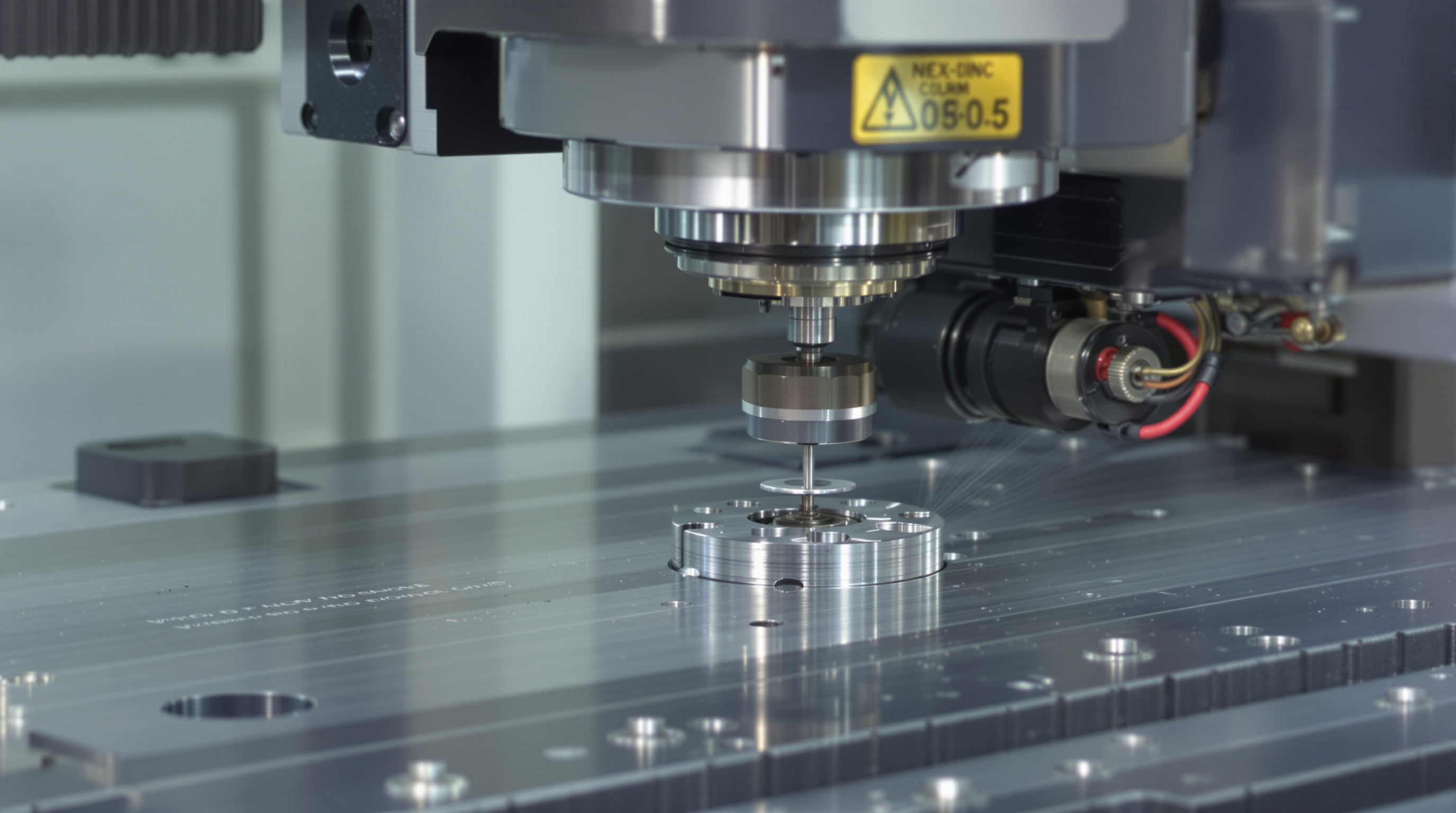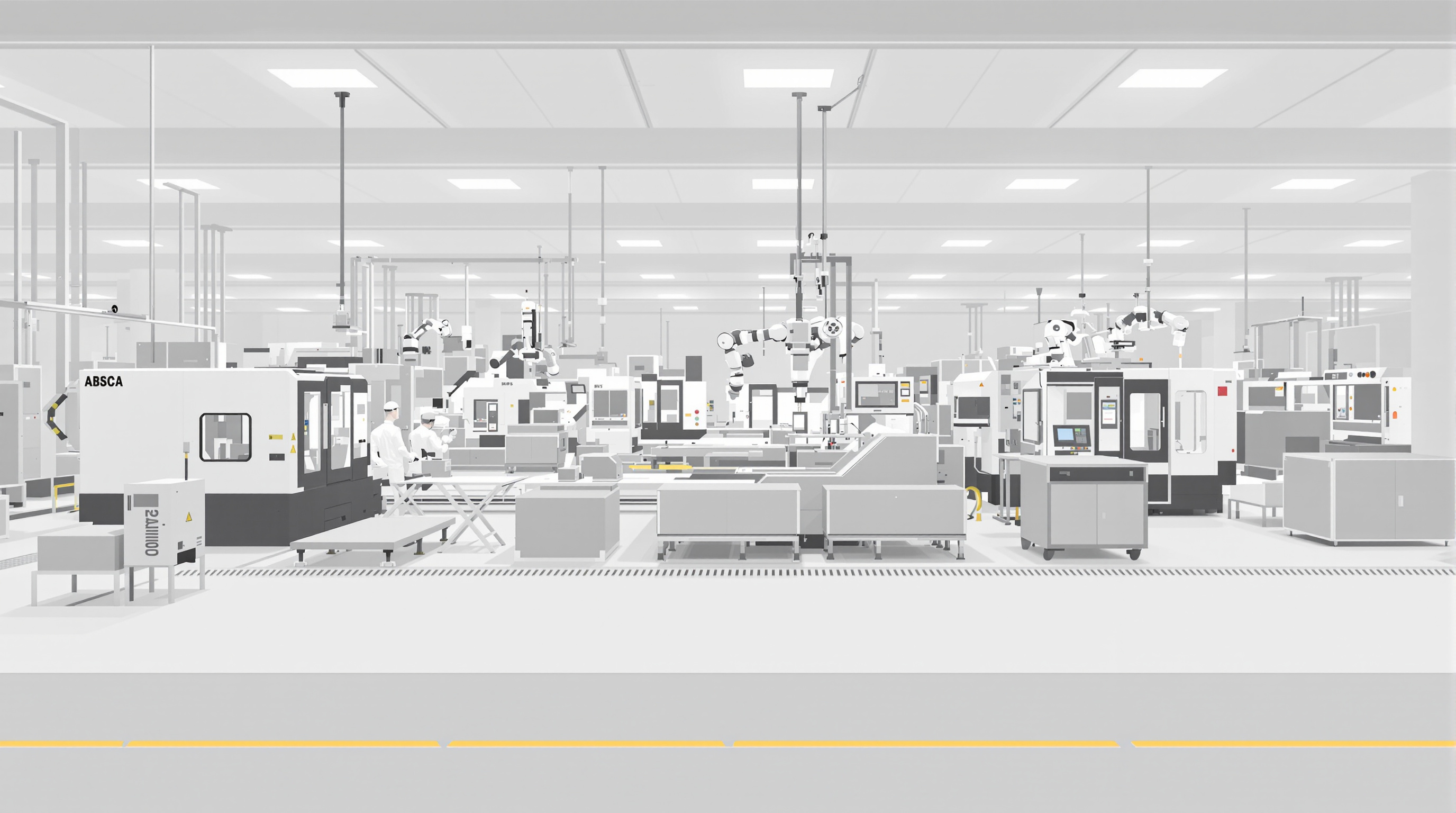Superior Precision and Tighter Tolerances in Complex Machining

How 5 Axis Mill Achieves Sub-5-Micron Dimensional Accuracy
The latest 5 axis milling machines cut down on those pesky cumulative errors because they can handle complex shapes all in one go. Traditional 3 axis CNC systems need lots of repositioning during production runs, but these newer machines move along five axes at once, giving tools direct access even to tricky compound angles. With advanced ball screw technology providing feedback down to 0.1 microns and solid machine construction, these systems keep cutting accuracy well under 5 microns. That kind of precision matters a lot when making parts like optical mounts or fuel injector nozzles where tolerances are tight. Research from the University of Stuttgart back in 2024 showed something pretty impressive too: dimensional variations dropped by around 62% when using these 5 axis systems instead of old fashioned multi fixture approaches with regular 3 axis machines.
Real-Time Calibration and Thermal Compensation in 5-Axis Systems
The intense heat from high speed machining often causes warping issues in steel parts, sometimes as much as 8 to 12 microns for every 10 degree Celsius rise according to ASME research from last year. To tackle this problem, modern 5 axis CNC machines now come equipped with built-in temperature sensors throughout their spindles and guideways. These sensors send real time data to smart algorithms that constantly monitor conditions. For example, when working with tough materials like titanium alloys at speeds reaching 15 thousand RPM, the machine actually makes adjustments to axis positioning while still running, keeping everything within a tight tolerance range of plus or minus 3 microns. And between tool changes, manufacturers use laser interferometers to calibrate the system, which helps maintain consistent positioning over extended production cycles.
Case Study: Aerospace Component Machining with 5 Axis Mill
One turbine blade maker saw their scrap rate drop dramatically when they switched to 5-axis CNC milling technology. Before this change, they were dealing with around 14% waste, but now it's down to just 2.1%. When they machine both the airfoil shapes and those intricate cooling channels all at once, the surface quality gets much better too. Surface flatness measurements went from about 8.7 microns Ra to only 3.2 microns Ra. Another big plus is that using a single fixture setup removes those pesky alignment problems that used to occur between the base and tip sections of blades. This has resulted in an impressive 98.6% success rate on the first try for these critical aviation parts where precision matters most.
Unmatched Versatility for Complex Geometries and Design Freedom
Simultaneous Multi-Axis Movement for Intricate Part Machining
The 5 axis mill changes everything when it comes to making complicated parts because it can move along all five axes at once. No need to keep stopping and moving the workpiece around for different operations anymore. Just set it up once and watch as it machines those intricate shapes and gets into those really deep pockets that would be impossible otherwise. The machine keeps adjusting its path constantly so the cutting stays smooth and even throughout the whole process. For things like airplane turbine blades, this makes a huge difference. Less vibration means the tools don't bend as much during cutting, which lets manufacturers hit those super tight tolerances of plus or minus 0.005 mm. And getting those measurements right matters a lot for how efficiently air flows over the blade surfaces.
Manufacturing Complex Medical Implants Using 5 Axis Mill
The production of medical implants really shows off what these machines can do. Five axis systems now create custom titanium knee joints and spinal cages straight from CT scans. With tight control over tool angles, manufacturers no longer need to finish those biocompatible surfaces by hand. Production times drop about two thirds compared to older techniques, which matters a lot when every micrometer counts for successful bone integration.
Reduced Geometry Limitations and Elimination of Undercuts
Traditional machining setups impose severe design constraints due to limited tool access angles. 5-axis technology overcomes this by dynamically tilting the cutting tool to:
- Machine steep-walled cavities without tool collisions
- Produce internal features and undercuts without secondary operations
- Achieve draft angles exceeding 90° for injection molds This geometrical freedom reduces setup changes by 80% in automotive prototyping while enabling unified designs that consolidate multiple components.
Reduced Lead Times and Human Error Through Automation

Fewer Setups and Continuous Machining in 5 Axis Mill Operations
When using 5 axis CNC milling, operators can reach every angle of a part geometry during just one setup operation, which means no more stopping and starting to manually reposition parts. The whole process runs continuously, cutting down on machine downtime by around 60 percent according to industry reports. Plus, the cutting tools stay working at their best throughout because they aren't being stressed unevenly. Many manufacturing facilities have switched over from old fashioned 3 axis systems, and those who did see their production cycles speed up anywhere between 35% to almost half the original time it took before implementing these advanced machines.
Data Insight: 70% Reduction in Handling Errors Post 5-Axis Adoption
Switching over to 5 axis tech cuts down on where humans need to get involved during machining work. Factories report around 70 percent less mistakes when parts are handled because these machines position components with incredible accuracy, staying within plus or minus 0.0001 inches every time they run. The whole system just works so precisely that there's no guesswork about measurements anymore. This actually makes a big difference in how many defective parts end up getting thrown away. For companies making expensive components, scrap rates drop about 34%. And let's not forget the money saved. Mid sized shops typically see around $140 thousand dollars less spent each year just from cutting down on wasted materials alone.
Streamlined Workflow from CAD Design to Final Part
When advanced CAM software gets integrated properly, it basically bridges the gap between what's designed digitally and what ends up as real parts. The whole process works much better together these days because we don't have those old problems where different departments had to translate information back and forth. Production timelines typically shrink around 45%, which makes a huge difference for manufacturers. For really complicated parts that used to need several different machines and setups, everything can now happen in one go on a single machine tool. This cuts down how long products take to reach market by roughly 8 to 12 weeks for things like aircraft parts and medical devices, all while still making sure measurements stay within required tolerances.
Enhanced Surface Finish and Consistent Part Quality
5-axis mills deliver superior surface finishes critical for high-performance components by maintaining proper tool contact angles throughout complex contours.
Optimal Tool Angling Reduces Scallop Marks and Re-Work
Traditional 3-axis machines need those pesky positional stops throughout their operation, but 5-axis milling systems take a different approach. These advanced machines keep adjusting the cutting tool's angle as they work through materials. What does this mean for finished products? Well, no more those annoying scallop marks on surfaces that show up after machining. Those little bumps require extra work later on just to polish them away. The way these systems maintain even pressure across tools means less bending or breaking of equipment during long runs, so operators don't have to constantly step in to fix things. Look at what's happening in aerospace manufacturing right now - companies are seeing around 40% fewer problems needing correction after initial machining processes. This translates into real money saved and faster turnaround times for aircraft components that meet strict quality standards.
Case Study: Turbine Blade Finishing with 5 Axis CNC Mill
One major turbine manufacturer recently hit an impressive Ra 0.4 micrometer surface finish on their components, which actually goes beyond what's required in the aerospace industry standards. They accomplished this using advanced 5-axis milling techniques. The continuous toolpath control made it possible to move smoothly along those complex airfoil shapes without leaving any noticeable blend lines behind. What really stands out is how they managed everything in a single setup. This approach cut down the finishing time for titanium blades by around half, and there were absolutely no geometric issues that needed manual touch-ups afterward. Looking at the bigger picture, production yields have gone up by nearly 30% compared to last year according to data from Aerospace Machining Quarterly in 2023.
Improved Repeatability and Quality Assurance in Production Runs
Keeping track of spindle performance in real time along with thermal adjustments helps maintain stable dimensions from one batch to another, hitting that tight ±0.005 mm tolerance mark consistently. When automated sensors pick up on tool wear during machining, they automatically adjust offsets so surfaces stay uniform even after running parts for hours on end. Looking at statistical process control data reveals something pretty impressive too: around 92% of medical implant components pass quality checks on their first run, which cuts down significantly on the need for extra inspections later. All this careful repetition means fewer parts get rejected because of tiny variations that could mess up how well they seal against fluids or withstand repeated stress over time.
Long-Term Cost Efficiency and Tool Life Optimization
Extended Tool Life Through Even Load Distribution in 5 Axis Mill
The 5 axis CNC milling machine really helps tools last longer because it manages forces better during operation. When the machine cuts in multiple directions at once, the workload gets spread out over the whole tool instead of building up pressure in one spot. This even distribution stops those hot spots from forming where tools tend to wear out fast. The balanced way these machines work keeps temperatures stable too, which means fewer tiny cracks develop in the tool material. Industry data shows tools used on 5 axis systems can last about 40 percent longer than what we see with traditional 3 axis setups. For manufacturers, this translates to saving money on replacing worn tools so often and getting less downtime when waiting for new ones to arrive.
Reduction in Material Waste and Production Time
Streamlined workflows in 5-axis machining minimize raw material waste through near-net-shape manufacturing and zero intermediate repositioning. Single-setup capability eliminates alignment errors from manual refixturing, reducing scrap rates by 15–30%. Faster cycle times (25% shorter on average) and unattended operations compress project timelines while reducing labor overhead.
In summary, the 5 Axis Mill redefines complex part manufacturing by merging unmatched precision, versatile geometry handling, and streamlined efficiency into one solution. It not only slashes production costs and lead times through reduced waste and automation but also ensures consistent, high-quality outputs critical for industries like aerospace and medical. For businesses aiming to stay competitive in crafting intricate, high-performance components, the 5 Axis Mill stands as an indispensable tool.






